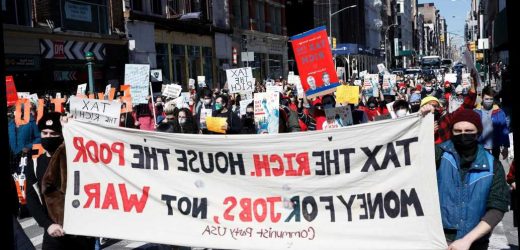More On:
taxes
Dem Socialist pols demand Heastie double NYS tax hikes to $14 billion
Federal, state income tax spikes will hammer NY’s top earners
COVID-ravaged New York faces new plague of tax increases
Bawl Street: Top NY companies mulling mass exodus over tax hike plan
Just a year after the Empire State was clobbered by the coronavirus, New York’s Legislature confronts an embarrassment of revenue riches. State taxes have rebounded more strongly than expected from the pandemic meltdown — capped by a massive injection of $12.6 billion in no-strings-attached federal stimulus funds.
Yet among their budget priorities for the fiscal year starting April 1, the Democratic super-majorities in the state Assembly and Senate want to raise $7 billion or $8 billion more in new taxes — mostly from a few thousand multimillionaire earners who already generate a disproportionately large share of the state’s revenue.
Gov. Cuomo opened the door to tax hikes in his mid-January executive budget, which called for a sliding scale of temporary three-year personal-income-tax surcharges on New York taxpayer incomes starting at $5 million.
Although Cuomo said the tax hike was needed to raise $1.5 billion, it has since become clear that receipts through fiscal 2022 will be billions higher than he originally projected. Indeed, his budget would generate a surplus without even counting stimulus payments that are more than twice as much as what he had counted on.
But that’s not enough for the Legislature. Lobbied by a coalition of powerful public-employee unions and urban progressive activists touting a confiscatory “tax the rich” agenda as the solution to every problem, the Assembly and Senate majorities would raise the top income-tax rates to new historic highs.
Under current law, residents of New York City are subject to a combined state and local income-tax rate topping out 12.7 percent — 3.9 percent in the city, plus a statewide rate of 8.82 percent — including a supposedly temporary but repeatedly extended “millionaire tax” surcharge first imposed in 2009.
Both legislative majorities favor raising the top tax rate to nearly 10 percent starting on incomes of $1 million ($2 million for joint filing couples) and to 11.85 percent on incomes of $25 million (the Assembly plan) or $50 million (Senate version). The combined marginal rate in New York City would thus rise to nearly 16 percent. On top of all that, lawmakers want to hit high-earners’ capital gains with a further 1 percent surcharge.
Lawmakers are turning a blind eye to the impact of the 2017 federal tax law’s virtual elimination of the state and local tax (SALT) deduction, which boosted New York’s effective marginal rate by 43 percent in 2018. The Assembly and Senate plans would raise the effective marginal rate on multimillionaire earners to nearly double the level of just four years ago.
Asked how targeted taxpayers might be expected to respond to this onslaught, legislative sponsors generally echo the complacency of Mayor de Blasio, who testified last month that he’s unworried about an uptick in multimillionaire out-migration, “because this is the place they want to be” — despite New York City’s well-documented increase in crime and disorder, the likely shift to more remote work and the tax hikes already resulting from the lost SALT deduction.
More than a few lawmakers probably share the attitude expressed by Sen. Luis Sepulveda (D-Bronx) during an online tax-the-rich pep rally last December.
“Millionaires leaving if we increase taxes?” Sepulveda said. “Well, I say I will open the door and make sure it doesn’t hit them on the ass on the way out. Because if you’re that wealthy . . . and if you don’t have the heart to want to say, ‘I will contribute more to help millions of people,’ then leave the state, find another place to live. We’ll find other millionaires that are chomping at the bit to move into this state.”
Good luck with that, guys.
E.J. McMahon is a senior fellow at the Empire Center for Public Policy.
Share this article:
Source: Read Full Article


